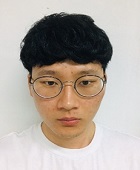
YOLOv5를 이용한 정상/비정상 적혈구 구별 알고리즘 개발
Abstract
Blood with cells such as WBC, RBC, and platelets, is often used in health diagnoses using morphological analyses. Among them, RBC is used as an indicator for diagnosing diseases such as diabetes, anemia, and heart failure; however, their accuracy is poor due to subjective analyst interpretations since they change reversibly based on various environmental factors such as viscosity, osmotic pressure, and calcium in the blood. In this study, an algorithm that objectively analyzes the shape of RBC and measures the ratio using YOLOv5, an AI technology, was developed and used to distinguish them as normal or abnormal. Data was augmented using image processing technology due to low data, and the YOLOv5 model was applied after labeling, where it was classified into four classes. The developed algorithm was verified through precision and recall, and subsequently applied to the test data to distinguish normal/abnormal red blood cells to obtain a ratio.
Keywords:
Diagnosis AI algorithm, YOLOv5, Red blood cell, Image processingAcknowledgments
이 연구는 2020년도 정부(교육부)의 재원으로 한국연구재단의 지원을 받아 수행된 기초연구사업임(No. 한국연구재단에서 부여한 과제번호: 2020R1I1A3073575/NRF-2020R1F1A1072926).
References
-
Merino, A., Puigví, L., Boldú, L., Alférez, S., Rodellar, J., 2018, Optimizing Morphology through Blood Cell Image Analysis, Int. J. Lab. Hematol., 40:1 54-61.
[https://doi.org/10.1111/ijlh.12832]

-
Kim, J. H., Lee, H. Y., Shin, S. H., 2015, Advances in the Measurement of Red Blood Cell Deformability: A Brief Review, J. Cell. Biotechnol., 1:1 63-79.
[https://doi.org/10.3233/JCB-15007]

-
Choi, J. M., Lee, W. S., 2013, Development of a Poikilocyte Measuring Method Using Image Analysis Software, Lab. Med. Online, 3:6 6-14.
[https://doi.org/10.3343/lmo.2013.3.1.6]

-
Hyun, B. H., Gulati, G. L., Ashton, J. K., 1991, Differential Leukocyte Count: Manual or Automated, What Should It Be?, Yonsei Med. J., 32:4 283-291.
[https://doi.org/10.3349/ymj.1991.32.4.283]

-
Taylor, J. J., 2010, Blood Cell Morphology: Grading Guide, Arch. Pathol. Lab. Med., 134:8 1229-1230.
[https://doi.org/10.5858/2009-0646-BK.1]

-
Briggs, C., Longair, I., Slavik, M., Thwaite, K., Mills, R., Thavaraja, V., Foster, A., Romanin, D., Machin, S. J., 2009, Can Automated Blood Film Analysis Replace the Manual Differential? An Evaluation of the CellaVision DM96 Automated Image Analysis System, Int. J. Lab. Hematol., 31:1 48-60.
[https://doi.org/10.1111/j.1751-553X.2007.01002.x]

- Rümke, C. L., 1985, The Imprecision of the Ratio of Two Percentages Observed in Differential White Blood Cell Counts: A Warning, Blood Cells, 11:1 137-140.
-
Gyawali, P., Richards, R. S., Bwititi, P. T., Nwose, E. U., 2015, Association of Abnormal Erythrocyte Morphology with Oxidative Stress and Inflammation in Metabolic Syndrome, Blood Cells Mol. Dis., 54:4 360-363.
[https://doi.org/10.1016/j.bcmd.2015.01.005]

- Turchetti, V., De Matteis, C., Leoncini, F., Trabalzini, L., Guerrini, M., Forconi, S., 1997, Variations of Erythrocyte Morphology in Different Pathologies, Clin. Hemorheol. Microcirc., 17:3 209-215.
-
Constantino, B. T., 2015, Reporting and Grading of Abnormal Red Blood Cell Morphology, Int. J. Lab. Hematol., 37:1 1-7.
[https://doi.org/10.1111/ijlh.12215]

-
Papasouliotis, K., Murphy, K., 2021, Pictorial Guide to Canine and Feline Blood Smears, Part 2: Abnormal Findings – Erythrocytes, In Practice, 43 363-372.
[https://doi.org/10.1002/inpr.99]

-
Christopher, M. M., Hawkins, M.G., Burton, A.G., 2014, Poikilocytosis in Rabbits: Prevalence, Type, and Association with Disease, PloS One, 9:11 e112455.
[https://doi.org/10.1371/journal.pone.0112455]

-
Lenske, E., Padula, A. M., Leister, E., Boyd, S., 2018, Severe Haemolysis and Spherocytosis in a Dog Envenomed by a Red-bellied Black Snake (pseudechis porphyriacus) and Successful Treatment with a Bivalent Whole Equine IgG Antivenom and Blood Transfusion, Toxicon, 151 79-83.
[https://doi.org/10.1016/j.toxicon.2018.07.005]


M.Sc. candidate in the Department of Interdisciplinary Program in Biohealth-machinery convergence engineering, Kangwon National University. His research interest is Machine.
E-mail: jink4763@gmail.com

M.Sc. candidate in the Department of Interdisciplinary Program in Biohealth-machinery convergence engineering, Kangwon National University. His research interest is Machine.
E-mail: jihunkang0426@kangwon.ac.kr

M.Sc. candidate in the Department of Interdisciplinary Program in Biohealth-machinery convergence engineering, Kangwon National University. His research interest is biological.
E-mail: crudc925@gmail.com

Post-doctoral associate in the Department of Smart Health Science and Technology, Kangwon National University. His research interest is Micro/nano scale surface texturing technologies and digital twin.
E-mail: wkddndrl@kangwon.ac.kr

Professor in the Department of Smart Health Science and Technology, Kangwon National University. His research interest is Machine.
E-mail: hojinha@kangwon.ac.kr

Professor in the Department of Smart Health Science and Technology, Kangwon National University. His research interest is Antibody-drug conjugate, immuno-cancer cell therapy / gene and drug delivery system
E-mail: kslim@kangwon.ac.kr

Professor in the Department of Smart Health Science and Technology, Kangwon National University. His research interest is micro and nano system design and precision control of machine tools.
E-mail: kbh@kangwon.ac.kr

Professor in the Department of Smart Health Science and Technology, Kangwon National University. His research interest is Soft Robotics, Novel Mechanism Design, Bio-inspired Robot and Robot Application
E-mail: yjpark@kangwon.ac.kr